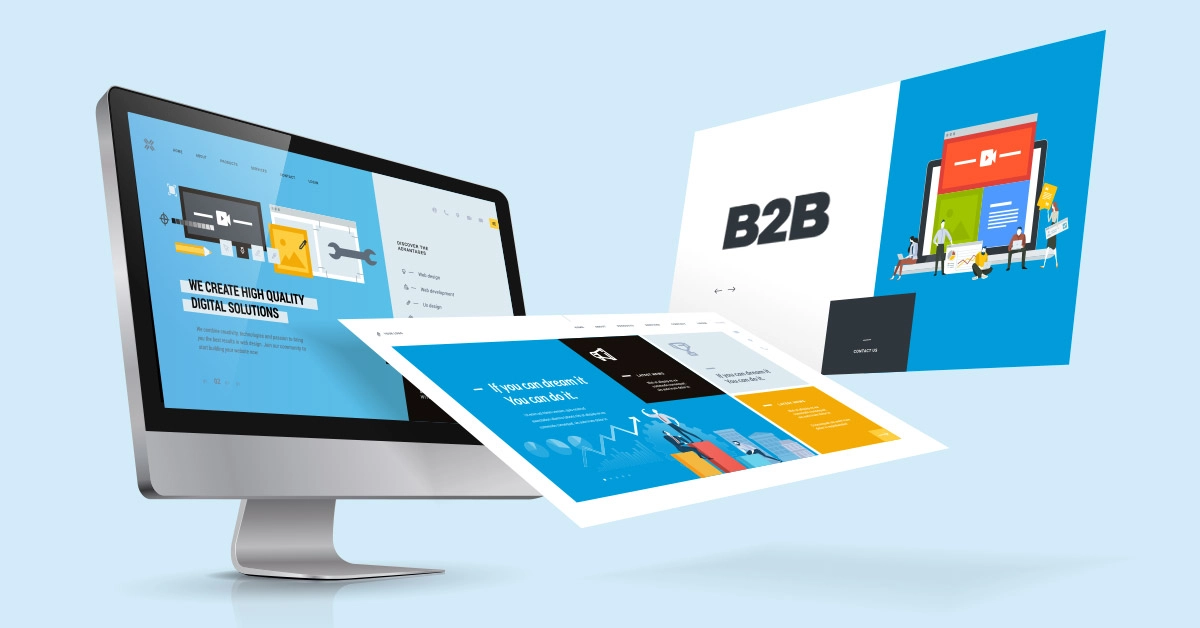In today’s competitive digital landscape, understanding user behavior is crucial for the success of any business-to-business (B2B) website. A well-designed B2B website not only attracts potential clients but also ensures they have a seamless experience, encouraging them to engage with your services. For businesses in Udaipur, working with a Web design company in Udaipur can be the key to creating a website that meets these objectives. By focusing on the principles of user behavior, companies can enhance their website’s functionality, usability, and overall effectiveness.
Why Understanding User Behavior Matters
Understanding how users interact with your website allows you to tailor your design to meet their needs, improving their overall experience. User behavior analysis involves studying how visitors navigate through your site, what pages they spend the most time on, and where they drop off. This information is vital for any Responsive Web Design Company Udaipur that wants to create a website optimized for its target audience. By applying this knowledge, you can design a B2B website that not only attracts but retains users, leading to higher conversion rates.
Key Principles of B2B Web Design
When designing a B2B website, several principles should guide the process. These principles are based on user behavior patterns and are essential for creating a website that is both functional and aesthetically pleasing.
1. Simplicity is Key
B2B websites should be simple and straightforward. Unlike consumer-facing websites, which might use flashy designs and complex elements to grab attention, B2B websites should focus on clarity and ease of navigation. Your potential clients are busy professionals looking for quick solutions. Therefore, a simple, well-structured website can make it easier for them to find the information they need, leading to better engagement.
Key elements to consider include:
- A clean and minimalist design
- Easy-to-read fonts and a cohesive color scheme
- Clear and concise calls to action (CTAs)
2. Responsive Design for All Devices
In today’s digital age, it’s crucial for B2B websites to be accessible across all devices. This is where a Responsive Web Design Company Udaipur can play a pivotal role. A responsive design ensures that your website adapts to different screen sizes, whether your users are on a desktop, tablet, or smartphone. Since many B2B decision-makers are constantly on the move, having a mobile-friendly website is essential for capturing their attention and making a strong first impression.
Key benefits of responsive design include:
- Improved user experience on all devices
- Higher rankings on search engines like Google
- Increased conversion rates due to better accessibility
3. Focus on User Navigation
One of the most important aspects of B2B web design is user navigation. Your website should be easy to navigate, with a clear structure that guides users through the information you want them to see. This involves creating a logical hierarchy for your pages, using descriptive labels for menus, and ensuring that all links are working correctly.
Some tips for improving user navigation include:
- Use a clear and concise menu at the top of each page
- Implement breadcrumbs to help users track their journey on your site
- Include a search bar to help users find specific information quickly
4. Content That Speaks to Your Audience
The content on your B2B website should be tailored to your target audience. This means understanding their pain points, challenges, and needs, and addressing them through your website’s content. Engaging and informative content can help establish your brand as an authority in your industry and build trust with potential clients.
Key types of content to include:
- Case studies that showcase your success with previous clients
- Blog posts that address industry trends and common challenges
- Clear and informative product or service descriptions
5. Building Trust with Clear CTAs and Contact Information
For a B2B website, building trust is crucial. One way to do this is by providing clear and compelling calls to action (CTAs) that guide users toward the next step in their journey. Whether it’s scheduling a consultation, downloading a whitepaper, or requesting a quote, your CTAs should be prominent and easy to find.
Additionally, ensure that your contact information is easily accessible. Potential clients should be able to reach you without having to search for your contact details. Consider adding a contact form, phone number, and email address on every page of your website to make it as easy as possible for users to get in touch.
Understanding the User Journey
The user journey on a B2B website is typically more complex than on a consumer-facing site. B2B buyers often need to gather information, compare options, and consult with colleagues before making a decision. Therefore, your website should support this journey by providing all the necessary information and making it easy for users to take the next step.
Key stages of the user journey include:
- Awareness: At this stage, users are just becoming aware of your brand and are looking for information. Your website should provide clear, concise information about who you are and what you offer.
- Consideration: Users at this stage are comparing their options. Your website should provide detailed information about your products or services, as well as testimonials and case studies that demonstrate your success.
- Decision: At this stage, users are ready to take action. Your website should make it easy for them to contact you, request a quote, or make a purchase.
The Role of Analytics in Understanding User Behavior
To truly understand user behavior, it’s important to use analytics tools that track how users interact with your website. Tools like Google Analytics can provide valuable insights into which pages are performing well, where users are dropping off, and how long they’re staying on your site. By analyzing this data, you can make informed decisions about how to improve your website’s design and content.

